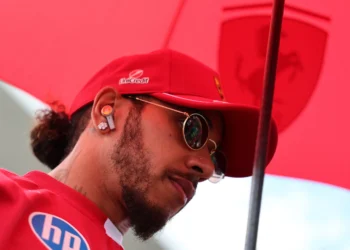Sponsorships are the lifeblood of NASCAR, fueling everything from car development to team logistics. But the way those funds are managed within a multi-car team like Joe Gibbs Racing (JGR) reveals the intricate financial strategies that underpin success at the highest level of stock car racing. A recent revelation from JGR media strategist Reece Kennedy has shed light on how one of NASCAR’s powerhouse teams handles sponsorship dollars—and it’s a philosophy rooted in teamwork and collaboration.
One Team, One Budget
Kennedy explained in a video FAQ session on JGR’s Instagram how the organization pools sponsorship funds, regardless of which driver secures the deal.
“At Joe Gibbs Racing, we’re four cars, one team. All the money goes into our overall operating budget. Expenses are divvied up evenly among all the teams, regardless of how much a sponsor pays or a particular driver makes—it all goes into one bucket, and we do everything as a team.”
This approach ensures that every driver—whether it’s Denny Hamlin, Christopher Bell, Ty Gibbs, or newcomer Chase Briscoe—has equal access to resources, leveling the playing field within the team.
The Challenges of Losing Major Sponsors
This unified financial strategy is put to the test when major sponsors leave. FedEx, long synonymous with Hamlin’s No. 11 car, announced its departure from NASCAR, following the 2022 exit of Mars, the primary sponsor of Kyle Busch. Both exits have raised questions about JGR’s ability to maintain its competitive edge.
The departure of Mars was a pivotal moment for JGR. Busch, a two-time Cup Series champion and one of NASCAR’s most marketable drivers, ultimately left the team in 2022, citing the inability to secure a new sponsor. Reflecting on the situation, Busch told journalist Jordan Bianchi:
“Did JGR try hard enough to sell me? My answer to that is no. They offered me a contract to race there without sponsorship, but I didn’t feel like that was fair for the 15 years I was there. I didn’t want Joe [Gibbs] putting his own money into the program.”
For JGR, the loss of FedEx and Mars highlights the fragility of NASCAR’s sponsorship model, where a single partnership can dictate the trajectory of a driver’s career and a team’s success.
Adapting to a New Sponsorship Landscape
The departure of big-name sponsors reflects a broader shift in the sponsorship ecosystem. Industry estimates suggest that full-season deals, once worth $25-30 million per car, now hover around $10-20 million. This decline has forced teams to rethink how they attract and retain sponsors.
JGR has secured key partnerships with Monster Energy, Interstate Batteries, and Bass Pro Shops for 2025, showcasing its ability to adapt. But these deals often involve more than just logo placement. Sponsors are increasingly seeking integrated partnerships that offer tangible value, such as technical alliances that benefit both the team and the sponsor.
“Sponsorships have evolved beyond logos—they’re now about bringing tangible value to teams,” said Joey Cohen, VP of Race Operations at Legacy Motor Club.
A Collaborative Philosophy
JGR’s “one team, one bucket” philosophy reflects its commitment to teamwork, a cornerstone of its sustained success. By pooling resources, the team ensures that all four cars remain competitive, even in challenging financial times. This collaborative approach has been instrumental in JGR’s multiple championships and consistent performances across NASCAR’s Cup Series.
However, it also underscores the stakes of securing high-value sponsors. The loss of FedEx, once one of NASCAR’s largest sponsorship deals, represents a significant financial gap. It’s a challenge not just for JGR but for the sport as a whole.
The Future of Sponsorship in NASCAR
As NASCAR’s sponsorship model continues to evolve, the focus is shifting toward partnerships that emphasize innovation, safety, and sustainability. Teams are becoming test beds for cutting-edge technologies, from driver safety solutions to energy-efficient systems.
JGR’s ability to adapt to these changes will be crucial in maintaining its competitive edge. While the loss of major sponsors like FedEx and Mars is a setback, the team’s collaborative financial strategy ensures it remains resilient.
For fans and industry insiders, the question remains: Can JGR continue to thrive without its flagship sponsors, or will the financial strain take its toll?
In the ever-changing world of NASCAR, sponsorship is more than a financial arrangement—it’s the backbone of a sport that balances innovation, competition, and entertainment. For Joe Gibbs Racing, the challenge lies in navigating this shifting landscape while staying true to its team-first philosophy.










